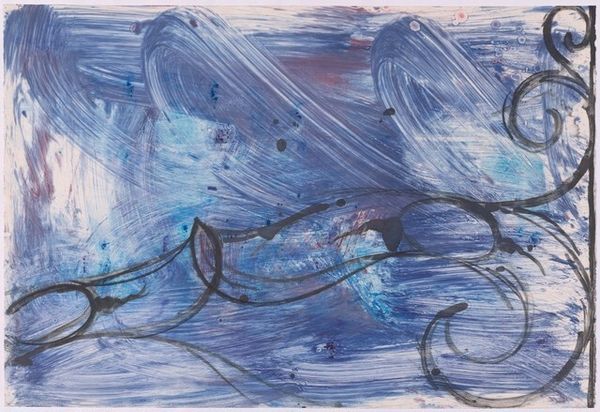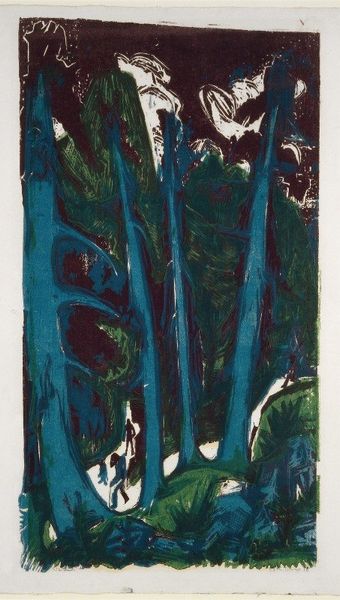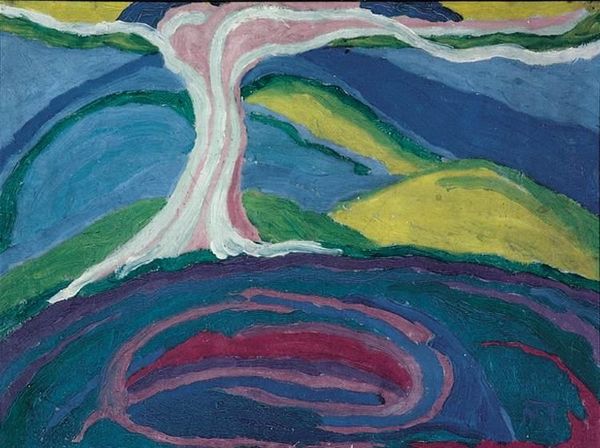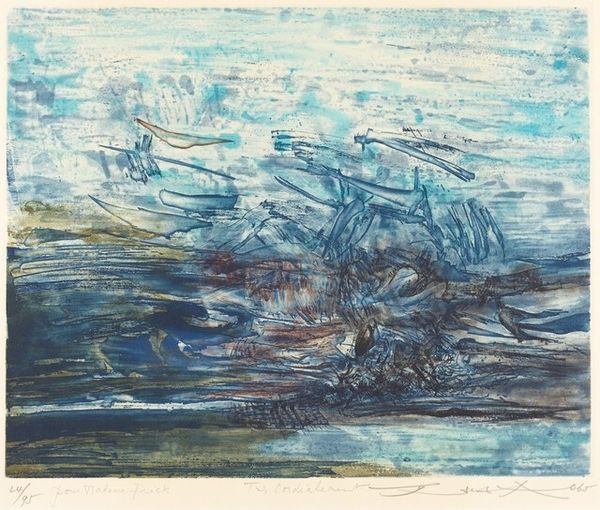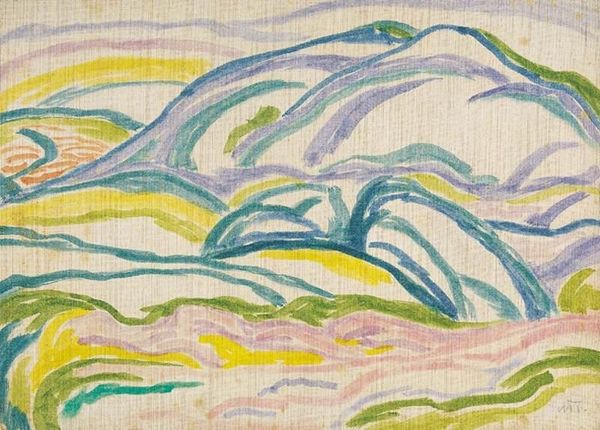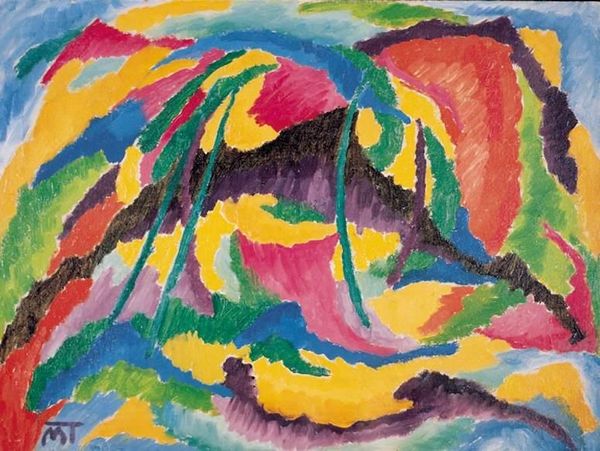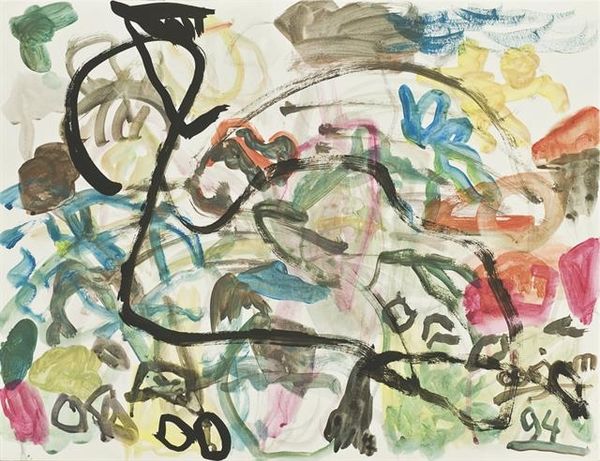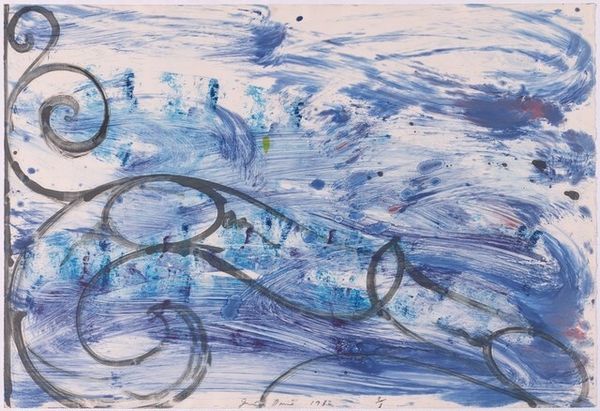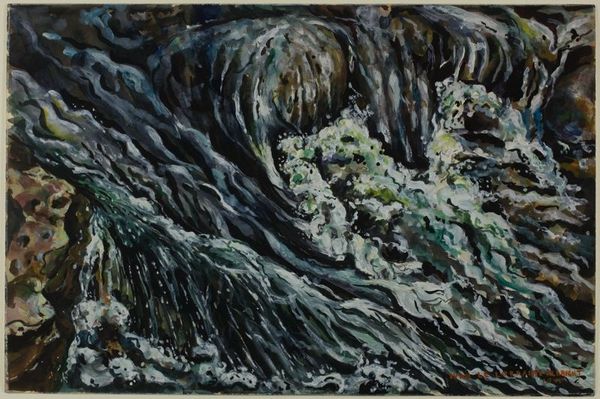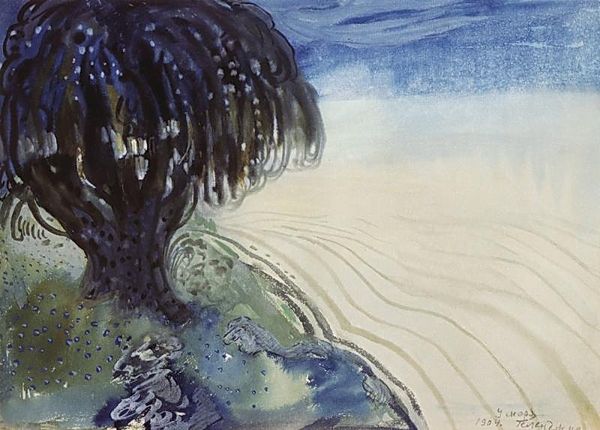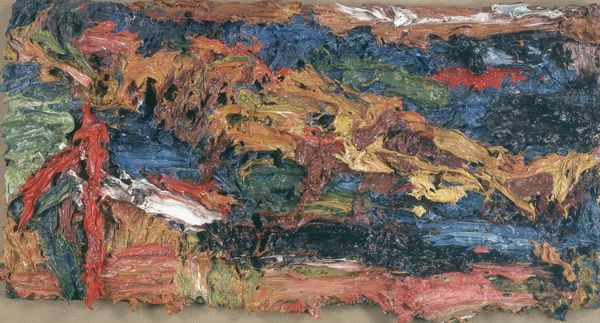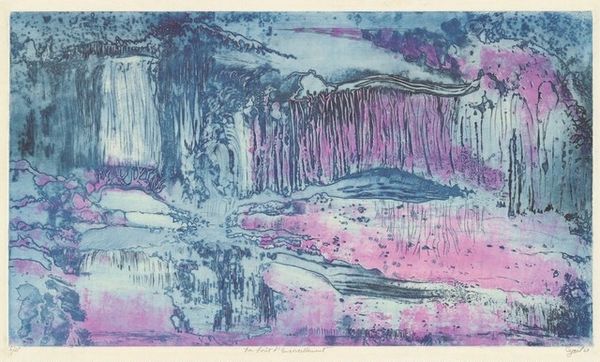
acrylic-paint, impasto
#
abstract-expressionism
#
abstract expressionism
#
landscape
#
acrylic-paint
#
form
#
impasto
#
abstraction
#
line
#
abstract art
#
pattern in nature
Copyright: Alfred Manessier,Fair Use
Curator: Here, we have Alfred Manessier's "Composition," painted in 1959, utilizing acrylic paint and achieving a distinctive impasto effect. Editor: Immediately, I'm struck by the work's raw energy. The interplay of the black lines and the watery blue evokes a sense of turbulent movement. It almost feels like peering down into a rapidly flowing river at night. Curator: Absolutely. Manessier’s process often involved layering colors and then scraping back into them, creating this dynamic tension between light and dark, depth and surface. The use of acrylic, relatively new at the time, allowed for that quick layering and manipulation. This challenged traditional oil painting techniques. Editor: I’m drawn to the rhythmic quality of the composition. Notice how the horizontality dominates, yet is disrupted by these seemingly random, darker patches. They seem almost disruptive, forcing a recalibration of our gaze. Curator: The social and political landscape of the post-war period undoubtedly shaped this abstraction. Manessier, along with other artists of the time, was grappling with notions of rebuilding and redefining identity in a world irrevocably changed. Editor: Do you feel it hints at a rejection of traditional representational forms, opting instead for a vocabulary of pure sensation? It bypasses the need for concrete imagery, communicating directly through its materiality and structure. Curator: In part, yes. It’s about presenting raw emotion and experience. Manessier was deeply involved in social justice movements, and his art reflects this commitment. The gestural application of paint becomes an act of asserting freedom. He trained in tapestry as well, which gave him insight into patterns, and I believe informs the movement of this artwork. Editor: An interesting point. Considering its context and formal components really changes how one perceives "Composition". It allows the work to resonate beyond the mere representation and invites a deeper involvement with the sheer essence of line, form, and color. Curator: Indeed. By considering Manessier's materials and context, we see "Composition" not just as a pretty picture but as a historical document, loaded with cultural significance and challenging the very nature of art production. Editor: I concur. Approaching the artwork using formalism enabled an intimate and embodied reading. I was forced to reconcile the feeling of natural immersion with the artificiality of brush strokes.
Comments
No comments
Be the first to comment and join the conversation on the ultimate creative platform.
